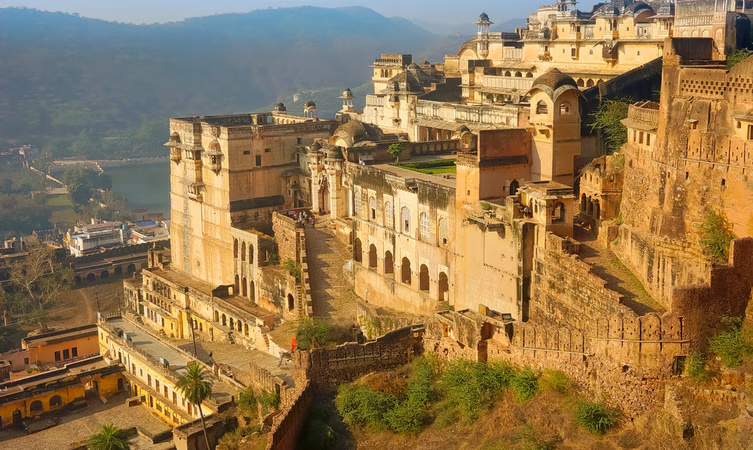Taragarh Fort, Bundi: A Timeless Sentinel of Rajasthan’s Heritage
Nestled on the steep slopes of a hillside overlooking the charming town of Bundi in Rajasthan, Taragarh Fort stands as a glorious sentinel of time. Known for its intricate architecture, historical significance, and panoramic views, this 14th-century hill fort is often referred to as the “Star Fort.” Constructed in 1354 AD during the rule of Rao Deva, the founder of Bundi, it is one of the oldest hill forts in India and an iconic symbol of Rajput valor and artistry.
Taragarh Fort was primarily built for military purposes, acting as a strategic bastion against invasions. Its elevation offers a commanding view of Bundi and the surrounding Aravalli Hills, making it an excellent defensive position. Over the centuries, the fort was expanded and embellished by successive rulers, transforming it into a palatial complex filled with elaborate structures, murals, reservoirs, and watchtowers.
The ascent to Taragarh Fort is an experience in itself. Winding pathways, flanked by dense greenery and occasional langurs, lead to the main gates—Lakshmi Pol, Phuta Darwaza (Broken Gate), and Gagudi ki Phatak. These massive entrances once housed huge wooden doors fortified with iron spikes, used to deter war elephants and invaders. As one walks up, the ancient stones seem to whisper stories of fierce battles and royal grandeur.
Inside the fort, several fascinating architectural features capture the imagination. One of the most prominent is the Bhim Burj, a massive stone battlement where once stood a colossal cannon known as Garbh Gunjam—literally meaning “Thunder from the Womb.” This imposing artillery piece symbolized the might of Bundi’s military prowess.
Another striking feature of the fort is the network of water reservoirs or “baoris.” These reservoirs, carved into the rock, were designed to collect and store rainwater—an ingenious system vital for sustaining the fort’s occupants during long sieges. Among them, Rani Mahal, or Queen’s Palace, reflects a more delicate side of the fort. Though now largely in ruins, its surviving murals and frescoes reveal the opulent lifestyle and artistic sensibilities of Bundi’s royals.
One cannot miss the fort’s stunning vantage points that offer breathtaking views of the town below. From the battlements, the blue rooftops of Bundi’s houses stretch out like a mosaic, interspersed with temples, stepwells, and palaces. The setting sun casts a golden hue over the land, turning the scene into a painting come alive.
Taragarh Fort is also steeped in legend. One popular story speaks of tunnels that run from the fort down to the plains, used as secret escape routes during times of siege. While most of these tunnels are now inaccessible or have collapsed over time, they continue to fuel the imagination of visitors and historians alike.
Despite its grandeur, Taragarh is less commercialized than other forts in Rajasthan, such as those in Jaipur or Jodhpur. This lends it a certain raw charm and serenity. The solitude of its crumbling bastions, the chirping of birds, and the whispering winds evoke a meditative atmosphere that is rare to find in today’s popular tourist destinations.
